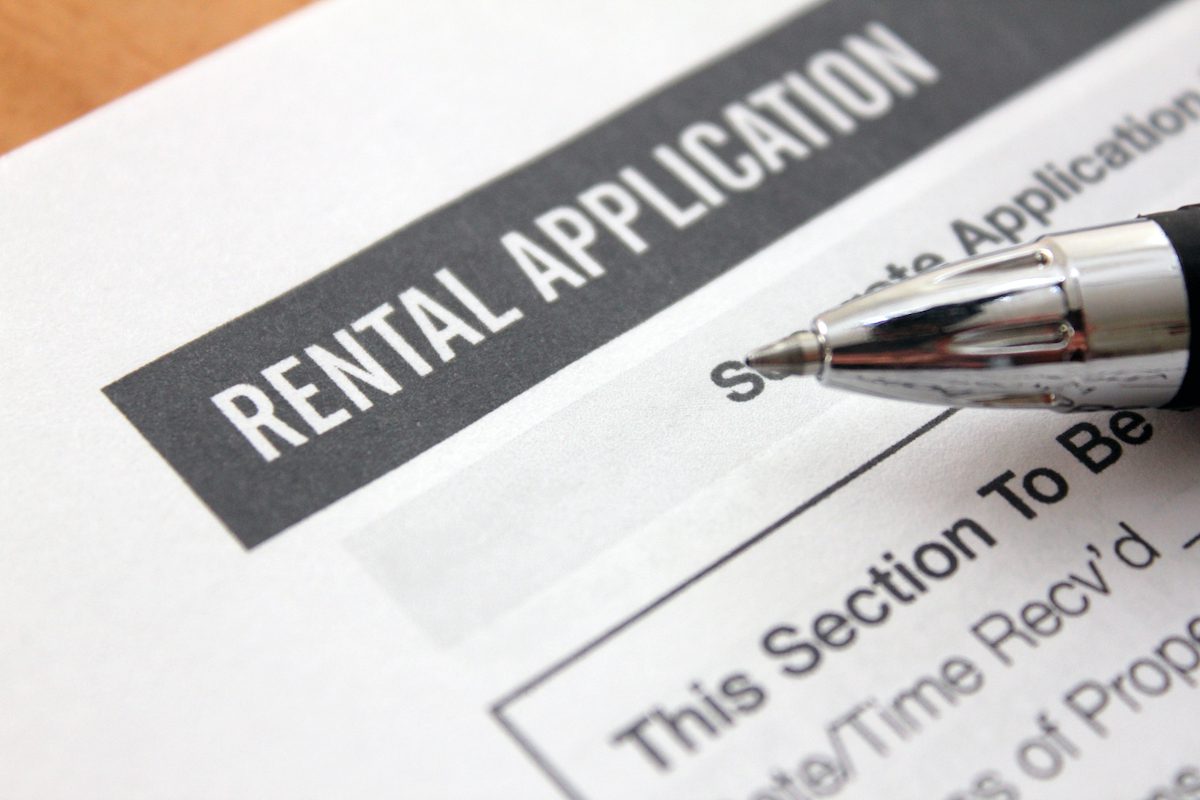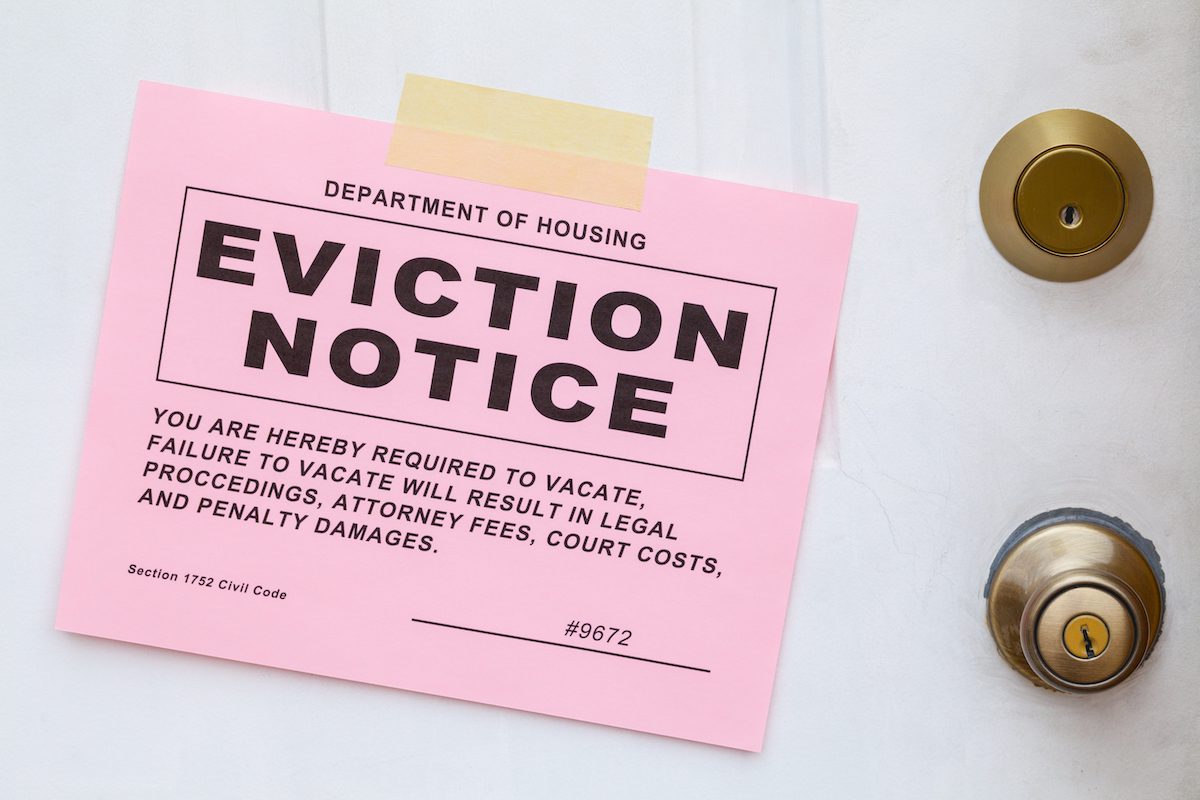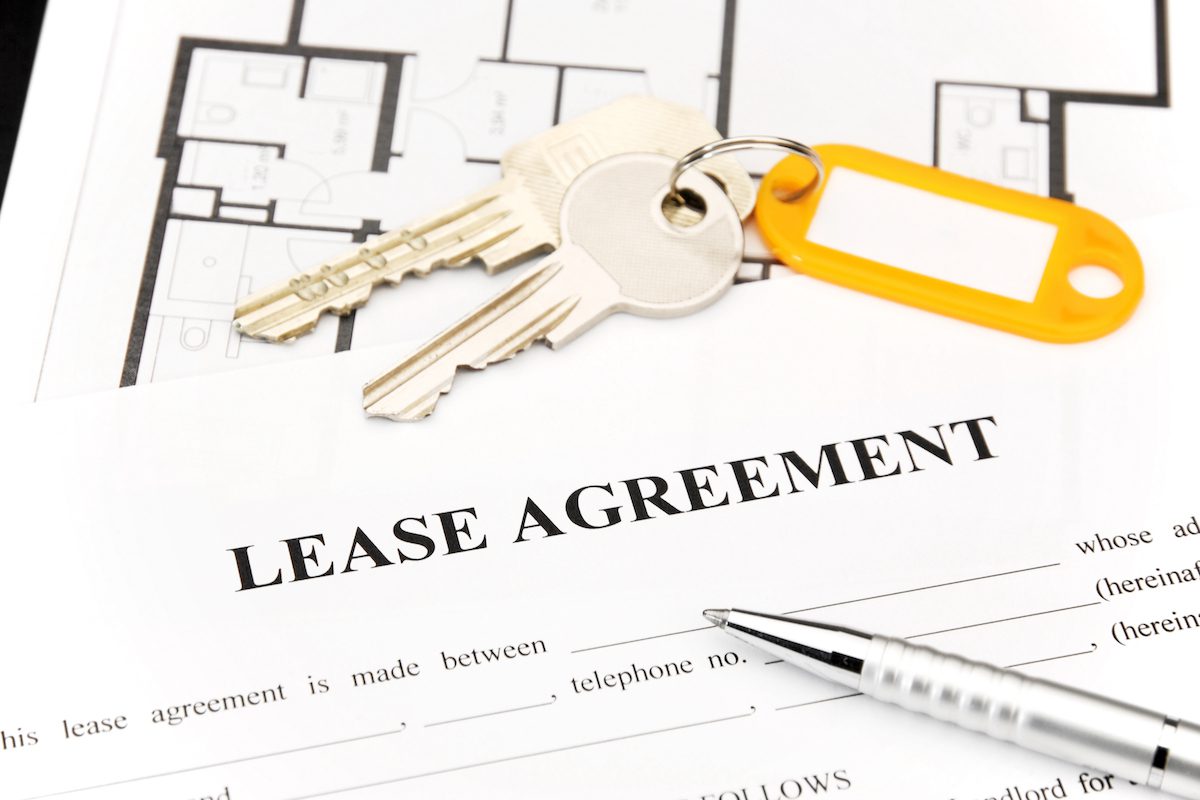Rental Terms: Your Complete Landlord and Renting Glossary

Owning rental property is a great way to generate some extra income, but it's intimidating when you're first starting out. You'll encounter many rental terms that you've probably never heard before, which can be confusing and frustrating.
Rental terms property owners need to know
From the day-to-day handling of your rental home to the provisions of a rental agreement to the legal jargon that comes with evictions, there are many words and phrases you'll need to familiarize yourself with. To guide you through the process, here's a list of 45 rental terms you may come across:
1. Abatement
A rent abatement is an agreement usually included in your lease that allows a tenant to stop paying rent or to pay a lesser amount if your rental home becomes unlivable. An abatement may apply if the home is under repair or construction, has been damaged by fire or there's a government evacuation order.
2. Abandonment
If a tenant hasn't paid rent for a set period of time and is no longer living in the home, the property may be considered abandoned. You need evidence that the renter has disappeared, such as conversations with neighbors or uncollected mail. Property owners are responsible for making an effort to locate a tenant before reclaiming the rental home, according to local landlord-tenant laws.
3. Application
Property managers often require potential renters to fill out this document to determine whether they qualify to rent the home. An application should ask for the potential tenant's basic details, contact information, previous addresses and Social Security number for a background and credit check. The application process may also include collecting references, pay stubs and bank statements.
4. Arrears
This refers to any overdue rent that a tenant owes. Arrears can occur when a tenant is struggling to make their payments or is refusing to pay rent for another reason.

5. Co-signer
A co-signer is a third party who doesn't live in the rental home but who agrees to assume the same legal responsibilities as the tenant, who actually lives there. Both the co-signer and tenant sign the lease. The co-signer is responsible for paying rent if a tenant stops paying and covering any damage that a tenant causes.
6. Co-tenant
Co-tenants are two or more people who agree to rent a home together. They may be listed together on the same lease or have separate leases. Either way, each co-tenant assumes the legal responsibility of following the lease agreement.
7. Credit history
To make sure tenants are likely to pay their rent on time each month, property owners typically run credit checks on potential renters to see if they have any past evictions and to examine their current debt load and any problems in their credit history. Tenants must give permission to have their credit checked under the Fair Credit Reporting Act, and property owners are prohibited from discriminating based on credit under the Equal Credit Opportunity Act.
8. Default judgment
When a tenant doesn't respond to an eviction or unlawful detainer action and fails to appear at an eviction hearing, the court may issue a default judgment. This allows the owner of the rental to request an order for the tenant to vacate the rental home. On the flip side, a tenant could receive a default judgment if a property owner doesn't show up for court.
9. Demurrer
A demurrer is a legal action that tenants can take in evictions where they agree with the facts of a lawsuit but object to certain allegations in the complaint. They may argue that it lacks validity or doesn't contain enough evidence to support the eviction. This can delay a legal eviction process.
10. Eviction
An eviction is the formal process to terminate a lease early, whether it's because a tenant fails to pay rent, damages the property or breaches the contract in other ways. Eviction laws vary by state, so property managers must familiarize themselves with the laws where their rentals are located.

11. Eviction notice
An eviction notice is a formal communication letting your tenant know that you're planning to evict and that they must move out by a certain date if they can't pay owed rent or clear up any other breach of their lease. The notice must give the tenant a certain number of days before you file the eviction with the court, according to local laws.
12. Extended absence
This is a provision included in many state landlord-tenant laws that requires tenants to notify the property owner or property manager if they'll be away from the home for an extended period of time, such as a few weeks. The exact number of days that constitute an extended absence should be included in the lease.
13. Fair Housing Act
The Fair Housing Act is a federal law that protects individuals from discrimination when they're renting or buying a home, applying for a mortgage, getting housing assistance or other housing activities. The law prohibits discrimination based on race, color, national origin, religion, sex, familial status and disability.
14. Fixed-term lease
A fixed-term lease includes a specific time period that the tenant agrees to rent the home. Most fixed-term leases are for 12 months, and tenants are required to fulfill the lease timeframe.
15. Grace period
Rent is usually due on the first of the month, but state law often requires lease agreements to include a grace period, or a time period after the due date when rent is considered late. Once the grace period ends, property owners can charge late fees or enforce the consequences of late payments.
16. Guarantor
A guarantor, similar to a co-signer, is a third party who guarantees that the tenant will pay their rent and comply with other provisions of the lease agreement. But, guarantors don't have a direct obligation to abide by the lease as a co-signer does. In some cases, a property owner must legally determine that the tenant is in default before collecting payments from the guarantor.

17. Guests
This refers to temporary visitors to your rental home. Lease agreements should specify how long guests can stay in the home and that they're responsible for following the lease, just like the tenants. If a guest overstays, it could give property owners grounds for evicting the tenant for breaking the lease.
18. Holdover tenant
This is a tenant who remains in the rental home after their lease expires. A holdover tenant can remain in the home if the property owner continues to accept their rent payments. But, they're considered trespassing if rent payments aren't accepted. Individual state laws may have specific provisions for handling holdover tenants.
19. Landlord
A landlord is the owner of the property who rents or leases the home in exchange for rent payments. They're responsible for repairs and keeping the home in good condition, responsibilities that are outlined in the lease agreements. Landlords also have the right to evict tenants who break their leases.
20. Lease agreement
This is a legally binding contract between you and your tenants. A lease agreement outlines the terms for a tenant renting your home, including the amount of rent, lease term, rules and regulations and the responsibilities of you and your tenant.
21. Lease commencement date
This is the date when a lease officially begins. It's when your renter is given access to move in, however, they're not required to move in on that date.

22. Lease renewal
Once a lease ends, your renter has the option to renew. Usually, a lease renewal just means signing a new lease or extending the current lease with the same terms. It's recommended to send a lease renewal letter to the tenant before the current lease expires.
23. Lessee/lessor
A tenant is referred to as the lessee or leaseholder. The landlord or property owner is the lessor, as the provider of the lease.
24. Mediation
If an issue occurs that you and your tenant can't agree on, mediation is a route you can take. A third-party mediator will bring you and the tenant together to discuss the problem and help you mutually come to a resolution.
25. Month-to-month lease
A month-to-month lease allows a tenant to pay rent monthly and decide whether to stay at the end of the month. These leases often automatically renew until the property owner or renter terminates the lease. Most state laws require notice — which can be 30, 60 or 90 days — to be given before the lease termination.
26. Notice to quit
This formal notice informs tenants that you plan to end the lease and start the eviction process. The notice to quit should state how the tenant violated the lease, such as by not paying rent or damaging property. Some states require you to give the tenant a certain timeframe to resolve the problem before they're evicted.
27. Notice of lease violation
This formal notice informs the tenant that they've violated the lease and gives them a certain number of days to clear up the violation before you end the lease and start the eviction process. The notice should explain what the violation is.
28. Notice to vacate
Tenants send a notice to vacate to the property owner stating that they plan to move out once the lease ends and not renew. The notice should be sent in advance of the lease ending, usually a month or two, but you should specify the timeframe in your lease agreement.
29. Occupancy limit
You're allowed to set limits for the number of people who can live in your rental home, but you must comply with federal and state housing laws. Occupancy limits may be based on local health and safety codes or federal occupancy standards which allow two people per bedroom. But, occupancy limits must not violate the Fair Housing Law's familial status protected class. Check with your local housing authority or an attorney before setting occupancy limits.

30. Pet deposit
If you allow pets in your rentals, a pet deposit is a one-time fee that covers any repairs or cleaning fees if a pet damages the property. You may also charge a monthly pet fee, where your tenant pays an extra charge with their monthly rent to cover the expenses of the pet.
31. Property management company
A property management company can be hired to handle the day-to-day aspects of your rental for a fee, usually a cut of the rent. Property managers find and screen tenants, collect rent, handle maintenance and repairs, respond to tenant comments and complaints and handle evictions.
32. Rent
This is the amount of money that your tenant agrees to pay to live in the home. Rent is paid on a regular basis, usually monthly, and the rent amount should be specified in your lease agreement.
33. Rent increase
Property owners have the right to increase the rent at the end of each lease term, whether it's a lease renewal or when you're renting to a new tenant. It's a good idea to list in the lease when rent increases will occur.
34. Renters insurance
A renters insurance policy is paid for by the tenant and helps protect them while living in your rental home. Policies typically cover the cost to repair or replace personal property in case of theft or an accident, repairs if the property was damaged, medical expenses if someone is injured on the property and living expenses if the home becomes uninhabitable. You can require your tenants to have renters insurance, just include it in the lease agreement.
35. Right of first refusal
This is a clause often included in a lease that gives a tenant the first opportunity to re-lease the home or an additional property that might be available soon before it's made available to the public. The property must be at the same rent price and under the same conditions.
36. Screening
Screening is the process property owners (or property managers) undergo to make sure someone is qualified to be your tenant. It involves reviewing their application, running background and criminal records checks and checking their rental history.

37. Security deposit
Tenants usually pay a security deposit when they sign their lease or move into your rental. It's an extra one-time charge on top of the rent that protects you financially in case the tenant damages the property, doesn't pay rent or terminates the lease early. Property owners hold onto the security deposit until the tenant moves out and use the money to pay for any repairs outside normal wear and tear. Any unused funds are refunded to the tenant, according to local laws and provisions included in your rental agreement.
38. Sublease
When a tenant rents out part of the home to another person, they're subleasing the space. Whether or not you allow this should be specified in your lease agreement. If a tenant subleases part of the home without your permission, you can terminate the lease. The tenant who's signed the lease is ultimately responsible for the rent and any damage to the property.
39. Tenant
This is the individual (or individuals) who sign a lease with a property manager. They agree to live in the home, while paying rent and following the rules and regulations of the lease agreement.
40. Tenancy
The tenancy, or term of the lease, is the length of time that a tenant agrees to live in the property, according to the lease. Most property owners use 12-month leases.
41. Termination
Termination refers to any instance when you or the tenant choose to end the lease agreement. It could be because of an eviction, the tenant decides not to renew the lease or the renter has vacated the property.
42. Turnover rate
The turnover rate refers to anytime a tenant vacates the rental home. High turnover rates can be expensive for property owners. Each time a tenant leaves, you have to clean, perform maintenance and spend time locating a new renter. Empty rental homes mean you're missing out on rental income.
43. Unlawful detainer
An unlawful detailer is a type of eviction, where a property owner can legally remove a tenant from the rental. It's a court proceeding that can move quickly through the courts when a renter stops paying rent, doesn't leave once a lease ends or the lease is canceled by the property owner. Some states have specific laws outlining the unlawful detainer process.

44. Wear and tear
This term describes the acceptable amount of damage that a rental may have at the end of a lease term but that doesn't require you to deduct money from the security deposit. Typical wear and tear might be repainting, carpet cleaning and scuffs on cabinets or floors.
45. Writ of possession
After an eviction hearing or unlawful detainer proceeding, a writ of possession is the court order granting the property owner possession of the rental and advising the renter to vacate the home by a certain date. If a tenant refuses to leave, the order lets you contact law enforcement for help.
Know these rental terms before signing on your first tenant
Owning rental property for the first time can be a learning experience, and understanding several words and phrases that come with the business can help you succeed. This glossary of rental terms will help you navigate the process of being a rental property owner.
